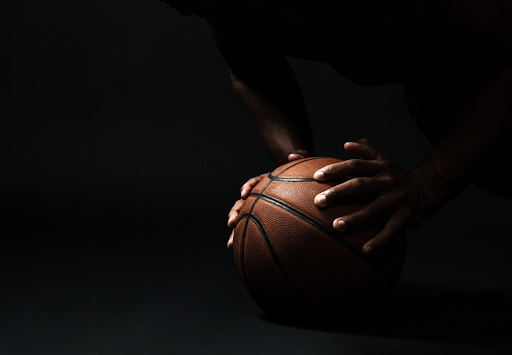Inside Look: Shooting Accuracy: Techniques Used by the Greatest Strikers
Some goals are sheer power, while others are all about placement. Every top striker knows the ultimate separator is how exactly you apply force—and it isn’t just brute strength. Take Thierry Henry’s curled finishes and Lewandowski’s one-touch strikes; elite scorers meticulously “shoot” the way scientists approach their discipline.
How do these top strikers execute such feats? What specific physical movements, skills, thought processes, or psychological frameworks shape up the finest finishers across the globe?
How top strikers from around the globe emphasize drills, data, and decisive decision-making to hone accuracy reveals the secrets of shooting we will uncover today.

The Foundation of Accuracy: Technique Over Power
Most new-age forwards believe goals arise from power placed on the ball, but top centers and strikers have control to thank. A shot that sails dangerously close to the post will yield far better results than a blazing missile that soars above the goalpost.
Over the years, even the viewers of
betting site Philippines markets understand: players that shoot accurately and score points tend to be valued way more than gap-merciful “heroes” who score jaw-dropping goals but do not net on a constant basis.
Accuracy comes down to five core elements:
• Body positioning before striking
• Balance and foot placement
• Contact point on the ball
• Follow-through direction
• Head discipline (not looking up too early)
Common Finishing Zones and How They're Targeted
Strikers are trained to recognize high-probability shooting zones. Coaches now use data to design finishing drills around “hot zones” inside and around the box.
| Zone Location |
Shot Type |
Success Rate (Top Leagues) |
| Inside 6-yard box |
One-touch, tap-ins |
75–80% |
| Center of penalty box |
Low-driven or placed shots |
55–60% |
| Edge of box (central) |
Curled or power shots |
25–30% |
| Wide angles (left/right) |
Near-post blasts or chips |
15–20% |
| Outside the box |
Long-range attempts |
Less than 10% |
Techniques That Improve Shooting Precision
Different strikers have different tools—but most rely on a familiar set of finishing techniques. The key is not using every method, but mastering a few.
Techniques Every Striker Should Know:
1. Side-foot finish – maximum control, ideal for tight angles
2. Low-driven shot – especially effective on wet surfaces
3. Curled effort – for shooting around defenders or keepers
4. Volley – when reacting to crosses or rebounds
5. Chip shot – when the keeper rushes out too early
6. Power strike – when distance requires force
7. Outside of the foot – for surprise or angle manipulation
Training sessions at elite clubs focus on refining these moves repeatedly, under varying pressure, angles, and pace.
Mindset and Confidence: The Invisible Skill
The mental side of shooting is just as critical as technique. Strikers must stay calm with defenders closing in, thousands watching, and the keeper narrowing space.
Experts agree: great finishers don’t just aim—they believe. Mental training often includes:
• Visualization techniques (imagining successful shots)
• Breathing control to reduce panic
• Short memory to recover after missed chances
• Routine before finishing (some tap the foot, others exhale deeply)
Even clinical players like Haaland miss chances. The difference is they don’t let it affect the next one.
How Modern Players Train for Accuracy
Training has evolved from simple shooting drills to simulated match scenarios, pressure training, and wearable tech.
Here’s a typical accuracy-focused training table used in elite academies:
| Drill Name |
Focus Area |
Duration |
Tools Used |
| Target Zone Shooting |
Hitting specific goal quadrants |
20 min |
Goal partition nets |
| First-Touch Finishing |
Receiving & shooting quickly |
15 min |
Pass rebounders, cones |
| Game-speed Finishing |
Shooting under time pressure |
15 min |
Defenders, countdown timers |
| Wrong-foot Finishing |
Using the weaker foot effectively |
10 min |
Static balls or slow roll-ins |
| Curve-and-Hit Technique |
Bending shots from outside the box |
10 min |
Marker dummies, cones |
What the Greats Say About Accuracy
Cristiano Ronaldo: “I don’t just shoot hard—I shoot smart.”
Wayne Rooney: “Placement beats power every time.”
Kylian Mbappé: “You need the goal in your head before the ball reaches your foot.”
Alex Morgan: “Repetition is what builds real confidence in front of goal.”
These insights reflect a common thread: accuracy is earned, not gifted.
Using Data to Refine Finishing
Clubs today use smart vests, motion tracking, and ball sensors to evaluate:
• Shot speed
• Trajectory
• Spin rate
• Contact angle
• Accuracy zone consistency
Players analyze heat maps of their shot locations and make adjustments to their techniques. Even the most specialized dives of a goalkeeper are analyzed, enabling strikers to better prepare for each match scenario.
This philosophy affects training as well as how players are evaluated, scouted, rated, or even placed in fantasy leagues and apps like
casino online game, where probability approximates actual world trends.
Final Thoughts: Accuracy Is a Skill Built Over Time
Shooting accuracy is not some farfetched phenomenon; it's the product of methodical effort. While some talent is beneficial, the best strikers often distinguish themselves through reliable performance and exhibit strong self-belief and self-mastery.
For the aspiring player, or even for the fan looking to understand the game more deeply, the intricacies surrounding every goal is what makes each game all the more remarkable. Every curled finish and chipped winner has a design crafted from thousands of attempts, failures, and meticulous adjustments.
